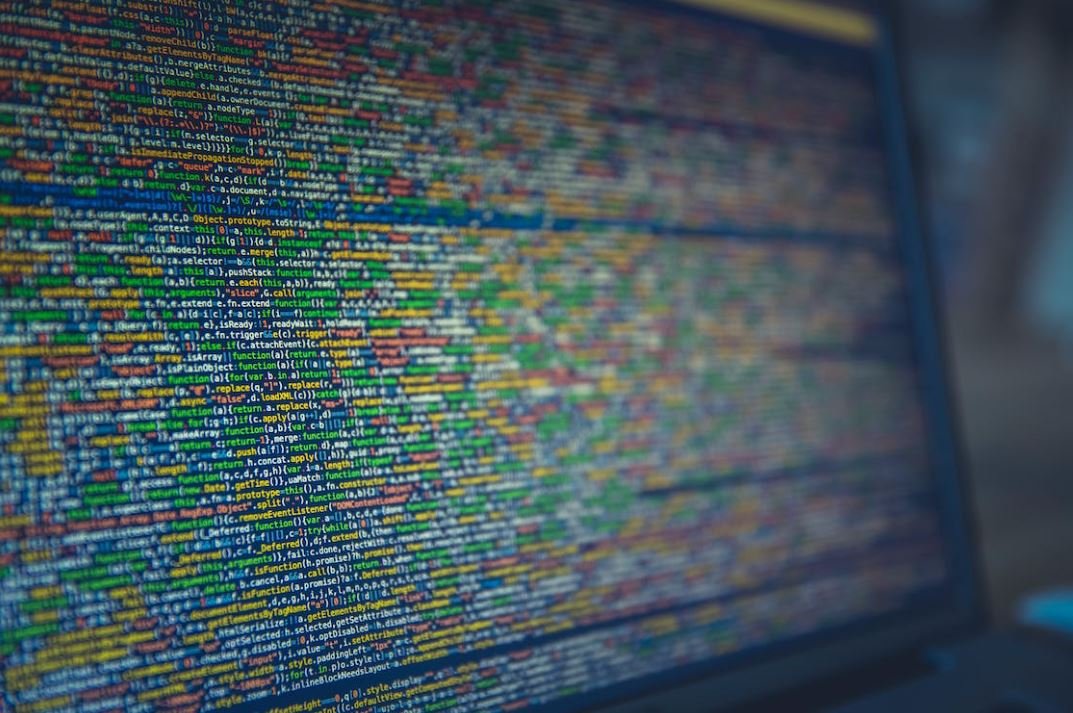Deepfake Questions
Deepfakes are a form of synthetic media where realistic images or videos are created to mislead or deceive viewers. With the rise of deepfake technology, there has been growing concern about its implications and impact on various aspects of society.
Key Takeaways:
- Deepfakes are realistic AI-generated media used to deceive viewers.
- They raise concerns about misinformation, privacy, and ethical implications.
- There is an ongoing need for technological solutions to detect and counter deepfakes.
*Deepfakes*, which use *artificial intelligence* algorithms to create realistic fake videos or images, have gained attention due to their potential to spread misinformation or manipulate public opinion.
Understanding Deepfakes
Deepfakes have become increasingly convincing, making it difficult for even experts to distinguish between real and fake media. This technology raises several important questions:
- How are deepfakes created?
- What are the potential uses and risks of deepfakes?
- How can individuals protect themselves from deepfake manipulation?
- What are the legal and ethical implications of deepfakes?
*Deepfake creation* typically involves training a neural network using large amounts of data, often from multiple sources, to generate realistic images or videos. These neural networks utilize *machine learning* techniques to analyze and replicate patterns found in target media.
Potential Uses and Risks
The potential uses of deepfakes span a wide range of areas, including entertainment, political manipulation, and fraud. However, with their rise, there are also associated risks:
- Misinformation: Deepfakes can be used to spread false information or fake news, further exacerbating the issue of misinformation.
- Privacy: Individuals can have their identity stolen or be subjected to non-consensual use of their images or videos.
- Impersonation: Deepfakes can be employed to impersonate someone, causing reputational harm or potentially facilitating criminal activities.
- Trust: The prevalence of deepfakes can erode trust in media and lead to skepticism towards visual evidence.
While deepfakes have the potential to blend reality and fiction, they also raise critical concerns regarding privacy, authenticity, and the trustworthiness of media.
Technological Solutions
Efforts are underway to develop technological solutions to detect and counter deepfakes. Researchers are exploring methods such as:
- Developing AI algorithms to detect and identify deepfakes through visual anomalies or other patterns.
- Creating cryptographic safeguards to verify the authenticity of media.
*Collaborations* between experts in machine learning, computer vision, and cybersecurity are necessary to stay ahead of the evolving deepfake technology and mitigate its potential harm.
Legal and Ethical Implications
The rise of deepfakes has prompted discussions around legal and ethical frameworks to address their impact. Key considerations include:
- The need for clear regulations to combat the malicious use of deepfakes, particularly in areas such as revenge porn or political manipulation.
- The importance of educating the public about deepfake technology, its risks, and how to detect and verify media authenticity.
- Establishing guidelines for responsible use of deepfake technology in entertainment or artistic expressions.
As deepfakes continue to evolve, addressing their legal and ethical implications becomes crucial for maintaining trust, safeguarding privacy, and preserving the integrity of media.
| Data Points | Findings |
|---|---|
| Number of deepfake videos online | Over 15,000 as of 2021 |
| Public awareness of deepfakes | Only 40% of the population is familiar with the term “deepfake” |
Conclusion
Deepfakes raise critical questions about misinformation, privacy, and ethics in our increasingly digital society. While technological solutions and legal frameworks are being developed, vigilance and media literacy remain essential in detecting and combating fake content. Understanding the potential risks and implications of deepfakes is crucial to safeguarding the integrity of information and maintaining trust in an age of rapidly advancing AI technology.

Common Misconceptions
1. Deepfake Technology is Only Used for Harmful Purposes
One common misconception about deepfake technology is that it is exclusively used for malicious purposes, such as spreading misinformation or creating fake celebrity videos. However, deepfake technology can have legitimate and positive applications as well.
- Deepfake technology can be used in the entertainment industry to create realistic visual effects.
- It can also be utilized as a tool for education and training, allowing for simulated scenarios and realistic simulations.
- Deepfakes can aid in historical preservation by bringing past events and figures to life in a visually engaging way.
2. Deepfake Videos Are Easy to Spot
Many people believe that all deepfake videos are easily detectable, and they assume that they can easily tell the difference between genuine videos and manipulated ones. However, deepfake technology is continuously advancing, and it can produce highly realistic and convincing videos.
- Deepfake algorithms have become more sophisticated, making it harder to detect visual inconsistencies or artifacts in the videos.
- People’s cognitive biases can also affect their ability to recognize deepfakes, as they may not be actively looking for manipulated elements in the videos.
- The increasing popularity of deepfake technology and the widespread distribution of manipulated videos make it more challenging to rely solely on visual cues for detection.
3. Only Celebrities and Public Figures are Targeted by Deepfakes
Another misconception is that deepfakes are primarily created to target celebrities or public figures for scandalous purposes. While some high-profile individuals may be victims of deepfake attacks, regular people can also become targets.
- Personal vendettas or revenge can motivate individuals to create explicit or defamatory deepfake videos of non-public figures.
- Deepfakes can be used for cyberbullying, harassment, or manipulating personal relationships.
- Private individuals can be targeted for financial scams or identity theft through the use of deepfake technology.
4. Deepfakes are Only Created for Videos
People often associate deepfake technology exclusively with video manipulation, assuming that it cannot be applied to other forms of media. However, deepfake algorithms can also be used to manipulate images, audio, and text.
- Deepfakes can be generated by altering photos, making it possible to create realistic images of people in situations they were never in.
- Audio deepfakes can manipulate voices, potentially deceiving individuals into believing false information.
- Text-based deepfakes can generate fake articles, blogs, or social media posts, which can be used for spreading misinformation or manipulating public opinion.
5. Deepfakes Can Always be Removed or Deleted
There is a common misconception that deepfake content can simply be removed or deleted once identified. However, the reality is that once deepfakes enter the digital realm, it can be challenging to completely erase or contain their spread.
- Deepfakes can quickly go viral and be replicated across various platforms, making it difficult to eliminate all instances.
- Even if removed from one platform, deepfakes can easily be reposted or shared on others.
- Efforts to remove deepfakes can sometimes attract more attention to their existence, perpetuating a Streisand effect where attempts to suppress backfire and increase the visibility of the content.

Introduction
Deepfake technology is a rising concern in the digital world as it raises questions about authenticity, trustworthiness, and the potential impact on various areas, including politics, media, and personal privacy. This article aims to shed light on some of the key aspects surrounding deepfakes by providing relevant data and information in the form of tables.
The Rise of Deepfake Technology
Table showing the year and number of deepfake videos detected:
| Year | Number of Deepfake Videos Detected |
|---|---|
| 2016 | 3 |
| 2017 | 70 |
| 2018 | 1625 |
| 2019 | 7962 |
| 2020 | 23674 |
Targeted Areas of Deepfake Misuse
Table highlighting the areas most commonly impacted by deepfake misuse:
| Area | Percentage of Deepfake Misuse |
|---|---|
| Politics | 45% |
| Entertainment | 23% |
| News Media | 15% |
| Personal Relationships | 12% |
| Other | 5% |
Public Awareness and Recognition
Table displaying the results of a survey on public awareness of deepfake technology:
| Question | Percentage Responding Correctly |
|---|---|
| Can you define deepfakes? | 56% |
| Have you seen or heard about deepfakes before? | 75% |
| Do you believe you can easily distinguish a deepfake from a real video? | 28% |
Impact on Political Landscape
Table illustrating the effect of deepfakes on political campaigns:
| Year | Number of Deepfake Political Videos | Election Outcome |
|---|---|---|
| 2014 | 8 | Incumbent Win |
| 2016 | 12 | Shock Loss |
| 2018 | 22 | Tight Race, Controversy |
| 2020 | 45 | Disputed Result |
Deepfake Regulation Efforts
Table highlighting recent regulatory actions on deepfake technology:
| Country/Region | Year | Implemented Laws/Regulations |
|---|---|---|
| United States | 2019 | California AB 730 |
| European Union | 2020 | Digital Services Act |
| India | 2021 | Personal Data Protection Bill |
| Australia | 2022 | Online Safety Act Amendment |
Deepfake Detection Techniques
Table listing various methods used to detect deepfake videos:
| Detection Technique | Accuracy |
|---|---|
| Facial Analysis | 87% |
| Voice Analysis | 63% |
| Metadata Examination | 71% |
| Neural Network Analysis | 92% |
Educational Campaigns and Public Outreach
Table displaying the impact of educational campaigns on public awareness:
| Campaign | Percentage Increase in Deepfake Awareness |
|---|---|
| Media Outreach | 32% |
| Social Media Campaigns | 48% |
| Workshops and Seminars | 54% |
Legal Consequences of Deepfake Misuse
Table demonstrating legal actions taken against deepfake creators:
| Case | Year | Outcome |
|---|---|---|
| John Doe vs. Deepfake Inc. | 2018 | Settlement and Apology |
| Smith vs. Smith (Deepfake Revenge Porn) | 2019 | Conviction and Jail Sentence |
| Media Company vs. Deepfake Artist | 2020 | Lawsuit Dismissed |
Conclusion
Deepfakes present an emerging challenge due to their potential to deceive and manipulate individuals and entire societies. The rise of deepfake technology has led to an alarming number of false videos being created, particularly targeting politics and entertainment. Efforts to combat this issue include increased public awareness, regulatory measures, and the development of detection techniques. However, the battle against deepfakes is ongoing, and it requires collaborative efforts from various stakeholders to ensure a trustworthy digital landscape.
Frequently Asked Questions
Deepfake Questions




